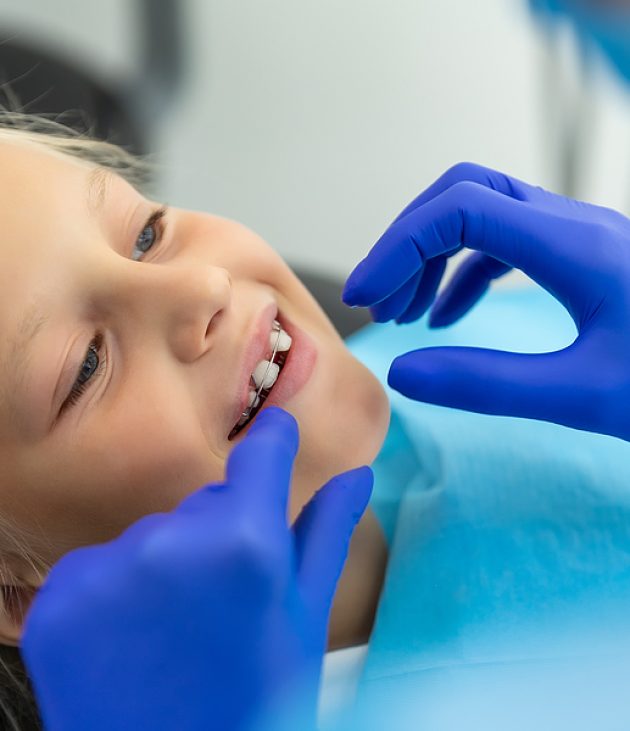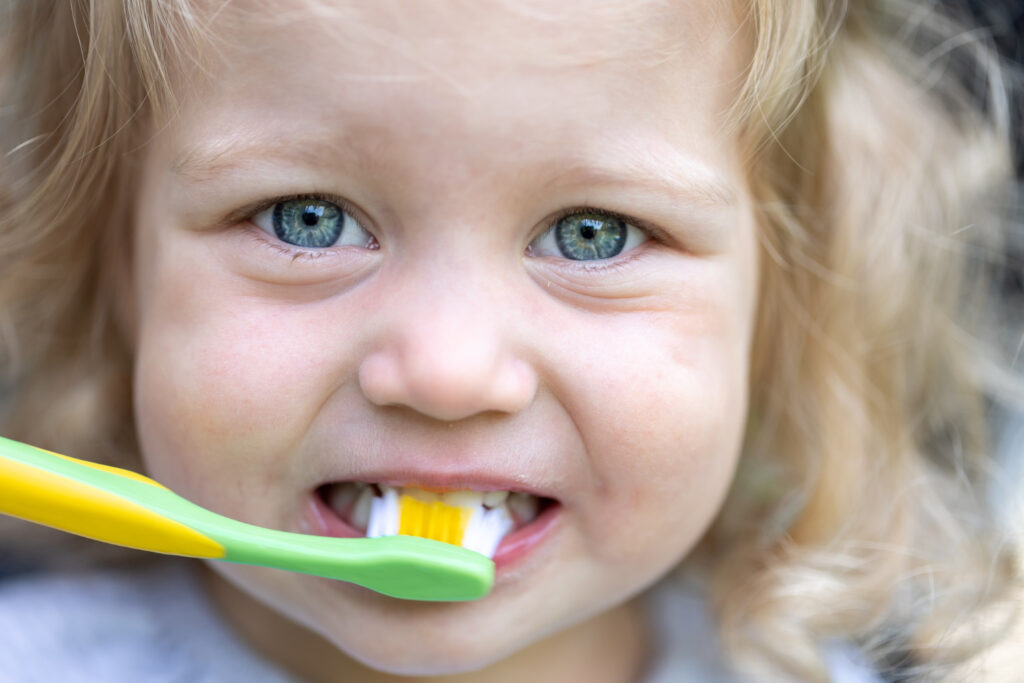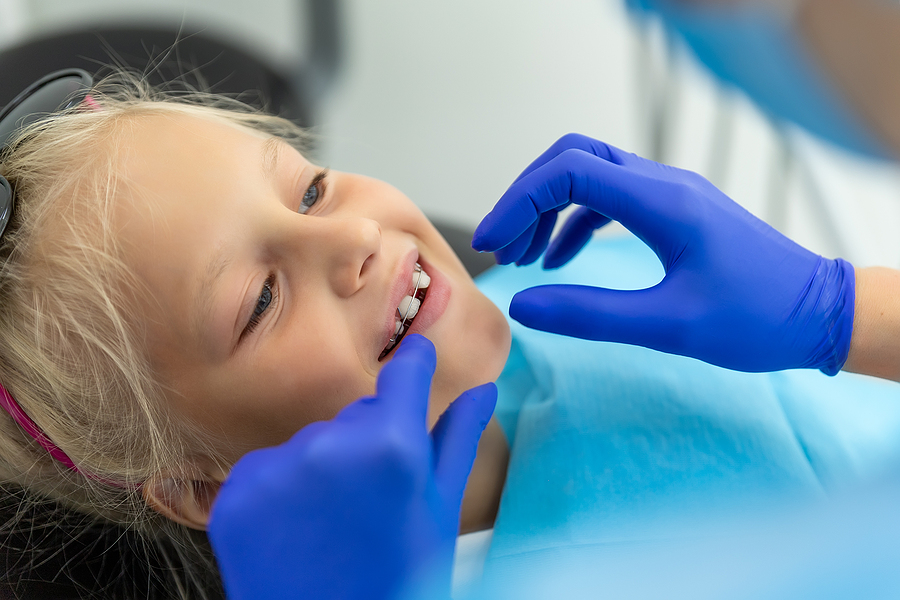Ensuring your child’s oral health is a priority for any parent. A crucial aspect of this is early orthodontic care. That’s why many of you ask, “When should my child see an orthodontist?” By understanding when to schedule your child’s first orthodontic visit, you can set them on the path to a lifetime of healthy smiles.
Why Early Orthodontic Evaluation Matters?
Early detection of potential dental issues can save your child from unnecessary discomfort and extensive treatments later on. Orthodontists recommend evaluating your child’s oral health by the age of 7 to catch any developing problems early.
This proactive approach allows orthodontists to intervene at the right time, ensuring proper dental development and alignment. By addressing issues early, you can potentially avoid more complicated and costly procedures down the road.
When Should My Child See an Orthodontist?
Key Factors in Determining the Ideal Time
When should my child see an orthodontist? The American Association of Orthodontists suggests that children have their first orthodontic evaluation by the age of 7. At this stage, the orthodontist can assess the child’s dental growth and detect any emerging issues that may require attention. This early evaluation allows for timely intervention if necessary, potentially preventing more severe problems later in life.
Early Intervention Benefits
While 7 might seem young for orthodontic evaluation, it’s a pivotal time in a child’s dental development. By identifying potential issues early, orthodontists can implement interventions that guide proper dental alignment and jaw growth, leading to healthier smiles in the long run.
Dental Development and Eruption of Permanent Teeth
Permanent teeth typically begin to erupt around age 6 or 7, marking a crucial stage in a child’s dental development. Orthodontists closely monitor this process to ensure that teeth emerge in the correct alignment and sequence.
Early evaluation allows orthodontists to detect any abnormalities in tooth eruption or spacing. Problems such as overcrowding, misaligned teeth, or irregularities in jaw size can be identified and addressed promptly, minimizing the need for extensive corrective treatments later on.
Early Signs Prompting Orthodontic Evaluation
- Difficulty Chewing or Biting: If your child experiences difficulty chewing or biting, it could be a sign of underlying dental issues. Orthodontic evaluation can determine the cause of these problems and recommend appropriate treatment.
- Persistent Habits: Habits like thumb sucking beyond the age of 5 can affect dental development, leading to misalignment or protrusion of teeth. An orthodontic assessment can help identify these habits early and provide strategies to address them.
- Speech Difficulties: Speech impediments may be linked to dental issues such as misaligned teeth or jaw discrepancies. An orthodontic evaluation can assess your child’s oral structure and recommend interventions to improve speech clarity and articulation.
Benefits of Early Intervention
1. Prevention of Dental Problems and Misalignments
Early orthodontic intervention can halt the progression of potential dental issues before they worsen. By addressing problems such as overcrowding, spacing abnormalities, or bite misalignments early on, orthodontists can prevent these issues from becoming more severe over time.
Addressing dental concerns early often results in simpler and less invasive treatment options. Correcting minor misalignments or spacing issues at a young age may eliminate the need for more extensive orthodontic procedures, such as tooth extractions or jaw surgery, later in life.
2. Facilitation of Proper Jaw Growth and Development
Orthodontic interventions in childhood can guide proper jaw growth, ensuring that the upper and lower jaws develop harmoniously. This proactive approach can help prevent issues such as overbites, underbites, or crossbites, which can impact both dental function and facial aesthetics.
Early orthodontic treatment can create space for permanent teeth as they emerge, reducing the likelihood of overcrowding or impaction. By guiding the alignment of incoming teeth, orthodontists can help maintain a straight and functional dentition from an early age.
3. Boosting Self-Confidence in Children
Addressing orthodontic concerns early can improve the appearance of your child’s smile, enhancing their confidence and self-esteem. A straight and properly aligned smile can boost your child’s self-image and social interactions, leading to greater happiness and success in various aspects of life.
Children with noticeable dental issues may become targets for teasing or bullying by their peers. Early orthodontic intervention can help prevent or minimize these negative experiences, fostering a positive self-image and emotional well-being in children.
2-Phased Treatment Approach
When should my child see an orthodontist? While intervention in orthodontics isn’t always a necessity, monitoring is invaluable, especially during critical developmental stages in children. Pediatric orthodontists usually apply the 2-Phased Treatment Approach to provide the best correction for little ones.
Phase 1 Orthodontic Treatment
Phase 1 orthodontic treatment, also known as interceptive or early orthodontic treatment, typically begins around the ages of 7 to 10. This proactive approach aims to address specific orthodontic issues early on, preventing them from becoming more severe in the future. Phase 1 treatment may involve correcting bite problems, guiding jaw growth, and creating space for incoming permanent teeth.
In some cases, Invisalign aligners may be utilized during Phase 1 treatment, particularly for mild to moderate alignment issues. Invisalign’s discreet nature and flexibility make it an attractive option for young patients, allowing them to undergo treatment without feeling self-conscious.
Phase 2 Orthodontic Treatment
Phase 2 orthodontic treatment typically occurs during adolescence, once most or all of the permanent teeth have erupted. This stage focuses on fine-tuning the alignment of teeth to achieve a straight, functional bite and a confident smile. Phase 2 treatment often involves traditional braces or Invisalign aligners, depending on the complexity of the alignment issues and patient preferences.
Importance of Monitoring
While not all children require early intervention, regular orthodontic check-ups are crucial for monitoring dental development and identifying any potential issues early on. By staying proactive and vigilant, orthodontists can intervene at the optimal time, ensuring optimal outcomes and minimizing the need for extensive treatment later in life.
Take the First Step Towards Your Child’s Healthy Smile with Floss & Gloss Kids Dentistry
At Floss & Gloss Kids Dentistry, we’re dedicated to providing specialized pediatric dental care that puts your child’s needs first. With a focus solely on children’s dental health, our Shoreline practice offers a welcoming and kid-friendly environment where your little one can feel comfortable and at ease.
Why Choose Floss & Gloss?
- Specialized Pediatric Dentistry: Our expertise in pediatric dentistry ensures that your child receives the tailored care they deserve, from infancy through adolescence.
- Kid-Friendly Environment: We create a fun and inviting space for children, complete with bright colors and interactive toys, making dental visits an enjoyable experience.
- Gentle and Caring Approach: Our compassionate team understands the fears children may have about visiting the dentist. We take a gentle approach to ensure your child feels safe and supported during their dental journey.
- Comprehensive Services: From routine check-ups to specialized treatments, we offer a full range of dental services to meet your child’s unique needs, including preventive care, orthodontics, and more.
- Educating Parents and Children: We believe in empowering families with knowledge about proper dental care. Our team takes the time to educate both parents and children on oral hygiene practices, nutrition tips, and preventive measures for lifelong dental health.
Trust Floss & Gloss Kids Dentistry to care for your child’s smile. Schedule an appointment today!





